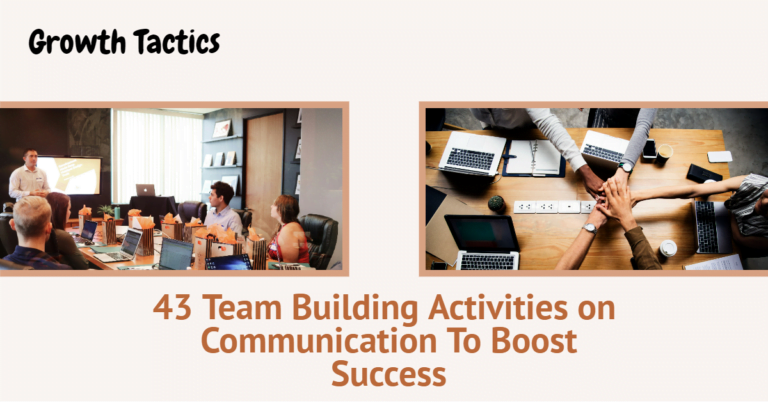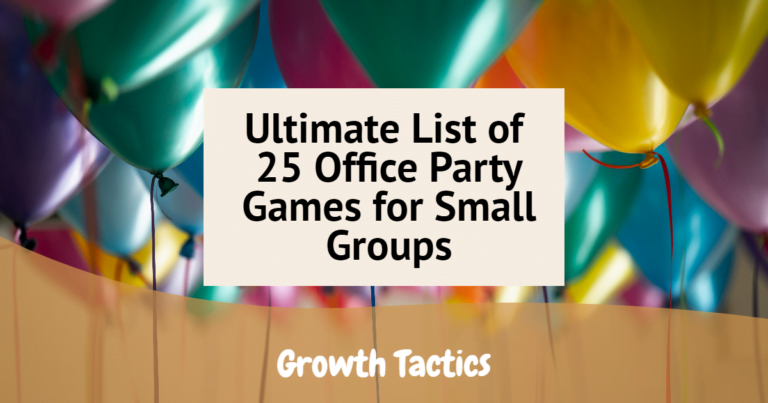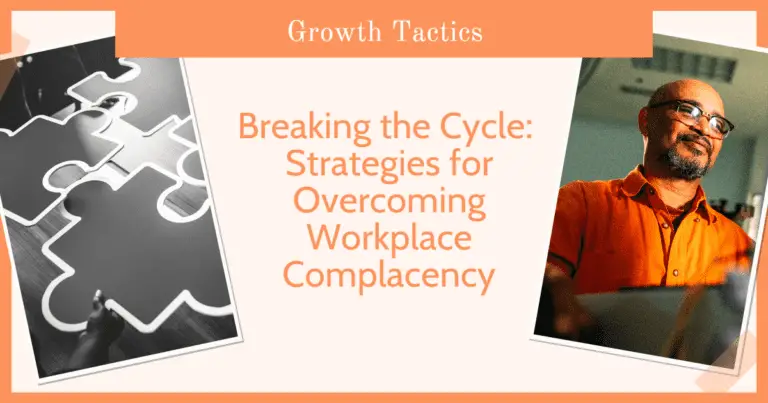From a manager’s perspective, the value of a one-on-one meeting cannot be overemphasized. This isn’t just an opportunity for a performance review, but also a chance to build trust with a direct report, guide their career path, and even get an insight into team dynamics that might not be apparent in the hustle and bustle of a team meeting. The article explores the best ways to make your one-on-one meeting more effective, an integral agenda for both managers and employees, aiming both for individual and company growth.
Jump To Section
What is the Purpose of one-on-one meetings?
One-on-one meetings serve several critical purposes. They provide an avenue for managers to coach employees directly, and they help employees grow by addressing their areas of improvement and eliciting feedback on the manager’s leadership. In addition, these meetings foster open communication since the setting is less formal and more congenial compared to group meetings.
Why is the First One-on-One Meeting Essential?
The first one-on-one meeting sets the tempo for all future meetings. This is a prime opportunity for the manager and their direct report to establish rapport and create a shared agenda for problem-solving, growth opportunities, and potential solutions. Taking the time to get to know your team member and showing interest in their aspirations goes a long way in establishing mutual trust.
What Should be Included in Every One-on-One Meeting?
Establishing a well-rounded structure for every one-on-one meeting is crucial for its effectiveness. Here are some essential components that should be included in every meeting:
Review of Previous Meeting’s Follow-ups
Each one-on-one should begin with a review of the actions and commitments made during the last meeting. Tracking these items ensures accountability and continuity and allows the direct report and manager to gauge progress.
Progress and Updates
Updates on current projects, tasks, or roles should be shared. This helps understand if the direct report is on track, facing any roadblocks, or if they need guidance. This not only pertains to task progress but also their development goals.
Challenges and Concerns
Making room to discuss any issues or concerns that the team member is facing is an excellent way of practicing transparency and creating a safe space for open conversation.
Feedback and Recognition
Both positive feedback for good work and constructive feedback for improvement should be part of the meeting. Recognition motivates employees, while constructive criticism can help them grow and enhance their skills.
Planning and Goal Setting
Use this time to together plan for future projects, discuss skills that need to be developed, and set both short-term and long-term goals. Continued discussion about career aspirations and progression plans helps the employee to see their role in the company’s long-term plans.
End with Clear Action Points
Summarize any points that need to be addressed, responsibilities that have been assigned, and what is expected to be completed before the next meeting. This gives structure and concrete actions to be taken.
Remember, these meetings are a collaborative effort between the manager and the direct report. Therefore, both should contribute to the agenda and help steer the conversation during the meeting.
Importance of a Meeting Agenda Template
Using a meeting agenda template not only saves time but also ensures all important points are covered. It helps to standardize the meeting process making it easy for both parties to anticipate and prepare for the meeting. Furthermore, it aids to align the meeting’s purpose, discussion points, and outcomes, optimizing the one-on-one time effectively.
How Often Should You Have 1 on 1 Meetings?
The frequency of one-on-one meetings depends on several factors such as the size of your team, the nature of your projects, or the specific needs of each employee. A regular cadence, however, can significantly improve communication and foster better working relationships. Here are some guidelines:
Weekly Meetings:
Holding weekly one-on-one meetings can be quite beneficial, especially in fast-paced environments where tasks and priorities may change rapidly. These allow for timely updates, immediate feedback, and swift problem resolution. However, it’s essential to keep these meetings concise and correctly focused to avoid them becoming tedious or a time-drain.
Bi-Weekly Meetings:
Bi-weekly meetings strike a good balance for many teams. They provide plenty of opportunities to address any issues, provide feedback, and discuss updates without overwhelming other work schedules. If your projects have longer timelines or if your team is more independent, this frequency might work best.
Monthly Meetings:
Monthly one-on-one meetings give a larger overview, focusing on broader goals, progress, and developmental plans. These can be more lengthy and comprehensive, providing a valuable deep-dive into the employee’s work, progress, and long-term objectives. Use these meetings to also motivate and guide the employee in their future career path.
It’s important to remember that these frequencies are not set in stone. Adjust them based on the dynamics and needs of your team. The goal is to make sure these meetings are frequent and regular enough to be beneficial, build trust, boost performance, and facilitate open communication.
Steps for Crafting the Ultimate 1-on-1 Meeting Agenda
Creating an effective one-on-one meeting agenda involves careful planning and an understanding of what needs to be discussed. Here are the steps you can follow:
Step 1: Define the Objective
Establish the main objective of the one-on-one meeting. The focus could range from professional growth and progress updates to resolving any challenges faced by the employee.
Step 2: Outline Key Topics
Determine the essential topics that need to be discussed during the meeting. This may include project updates, feedback, challenges faced or even professional development plans. It’s important to keep the list relevant and concise to ensure effective use of time.
Step 3: Allocate Time Slots
Assign a specific time slot for each agenda item. This helps ensure that every topic receives adequate attention and the meeting remains focused and productive.
Step 4: Arrange Topics Logically
Arrange the topics in a logical flow. For example, begin with a review of the previous meeting’s action items, followed by project updates, feedback, any issues, and end with goal setting for the next meeting.
Step 5: Share the Agenda in Advance
Ensure that the agenda is shared with the employee well in advance of the meeting. This gives them enough time to prepare their inputs or any points they wish to discuss.
Step 6: Leave Some Flexibility
Flexibility is key. Leave some room for impromptu discussions or topics that might arise during the meeting. Sometimes, these unplanned discussions can be quite productive and lead to essential breakthroughs.
By following these steps, you’ll be able to craft a one-on-one meeting agenda that not only keeps the conversation focused and productive but also addresses key issues and fosters open communication.
How Does a One on One Meeting Differ from a Performance Review?
One-on-one meetings and performance reviews serve distinct purposes. While the latter focuses on judging performance, typically on a relatively infrequent basis, one-on-one meetings are a more regular check-in, allowing managers to help their direct reports in a more timely and relevant way.
Benefits of Regular One-on-One Meetings
Regular one-on-one meetings bring several advantages to both the manager and the employee, enhancing their working relationship and boosting overall performance. Here are some of the key benefits:
Enhanced Communication:
Regular one-on-one meetings offer an avenue for open and transparent communication, where concerns, ideas, and updates can be shared freely. It creates an environment of trust, understanding, and collaborative problem-solving.
Improved Performance:
These meetings provide an opportunity for managers to share constructive feedback regularly, which empowers employees to enhance their performance promptly and address any problems that may affect their work.
Employee Growth and Development:
One-on-one meetings are an excellent platform for discussing professional aspirations, skills enhancement, and career development plans. They allow managers to guide employees on a consistent basis towards their career objectives.
Identifying and Solving Problems Quickly:
Regular meetings enable early identification of issues or roadblocks and their timely resolution. By nipping problems in the bud, these meetings ward off potential crises and help maintain a smooth workflow.
Enhanced Engagement and Job Satisfaction:
Frequent one-on-one discussions make employees feel valued and heard, which boosts their job satisfaction and engagement levels. When an employee knows their manager is invested in their success, it leads to increased job loyalty and motivation.
Strengthening Relationships:
Regular touchpoints fortify the bond between the manager and the employee, fostering mutual respect and understanding. They help in building stronger, more positive working relationships.
Identification of Training Needs:
These meetings can also help managers identify any skills gaps or training needs of their employees, leading to efficient workforce planning and development.
In summary, regular one-on-one meetings offer a holistic approach to managing employees effectively, promoting open dialogues, reinforcing performance, fostering career growth, and maintaining high working relationships and job satisfaction.
Ways to Make One-on-One Meetings More Effective
One-on-one meetings are vital instruments for managing and developing employees. To amplify their effectiveness, consider the following strategies:
1. Prepare in Advance
Preparation is key to an efficient meeting. Both manager and employee should review the agenda beforehand and come ready to discuss the outlined topics. This ensures that the meeting stays on track and objectives are met.
2. Encourage Open Dialogue
Maintain a culture of open communication where the employee feels free to voice their thoughts, ideas, and concerns. A two-way conversation is far more engaging and results in more productive outcomes.
3. Provide Constructive Feedback
Regular, constructive feedback helps the employee understand what they’re doing well and where they can improve. It’s crucial to deliver feedback objectively and tactfully, focusing on behaviors and outcomes rather than personal attributes.
4. Listen Actively
Beyond just hearing what is said, active listening involves understanding and processing the information. Managers should show they value the employee’s input by summarizing key points and asking clarifying questions.
5. Keep Time
Meetings should start and end on time to show respect for everyone’s schedules. Also, allocate enough time for each topic in the agenda to ensure that all matters received due attention.
6. Follow Up Appropriately
Recap the meeting, highlighting key points discussed, decisions made, and any agreed-upon action items. It’s a good practice to share these meeting notes with the employee for future reference and accountability.
7. Maintain Consistency
Consistent meetings lend a sense of structure and predictability, which can boost employee confidence and trust.
8. Foster an Environment of Trust
Creating a safe and trusting environment helps the employee feel comfortable to express their thoughts and ideas. It’s important to establish these meetings as a non-judgmental space, where constructive criticism and open dialogue can occur productively.
9. Stay Solution-Oriented
Whether discussing a problem or a potential improvement, always guide the conversation towards possible solutions. This keeps the meeting positive and shows that obstacles can be overcome.
10. Set Actionable Goals
Clearly define the tasks or objectives that arise from the meeting, making sure they are practical and achievable. This creates a sense of purpose, which can motivate the employee.
11. Give Praise When Due
Acknowledge and compliment the hard work and accomplishments of the employee. Recognition can be a powerful motivator and fosters a sense of appreciation.
12. Periodically Review Progress
Consistently revisit action items from previous meetings to check on progress. This helps the employee see their growth over time and reinforces the value of the meetings.
13. Personalize the Discussion
Take time to understand the individual needs and aspirations of your staff. Tailoring the discussion to fit each individual fosters the feeling that their development and success is important to the organization.
14. Prioritize Transparency
Mutual transparency can breed trust and understanding. Share relevant information, objectives, strategies, and expectations. This transparency will build a relationship that values honesty and openness.
15. Respect Confidentiality
Make sure the employee knows their concerns and thoughts shared in the meeting will be kept confidential, if requested. This safeguards the bond of trust and encourages honest communication.
16. Discuss Career Aspirations
Regularly discussing and revisiting the employee’s career goals can keep them motivated. It also provides an opportunity to align their aspirations with the company’s objectives, promoting a shared vision.
17. Use a Soft Start
Begin the meeting with a few minutes of casual conversation to create a positive and relaxed atmosphere. A little small talk can help both parties ease into the discussion.
18. Be Flexible with the Format
If the traditional discuss-assign-review meeting structure seems too rigid or ineffective, get creative! Experiment with different formats like walking meetings or shift the focus from daily tasks to big picture strategy once in a while.
19. Follow Through on Assistance
If it comes up during the meeting that the employee requires help, resources or additional training, ensure that you follow through. Doing what you promise will show that you value their needs and are committed to their development.
20. Regularly Evaluate the Effectiveness
Just like other processes, one-on-one meetings should also be reviewed and refined periodically based on feedback from both parties. This constant improvement keeps the process effective and meaningful to both parties.
Implementing these strategies can significantly enhance the effectiveness of your one-on-one meetings, leading to more constructive conversations, improved rapport, and better outcomes for both the employee and the organization.
What NOT to Do in a One-on-One Meeting
While one-on-one meetings are critically important management tools, their effectiveness can be undermined by certain practices. Here’s a list of things to avoid:
1. Neglecting Preparation:
Coming into a one-on-one meeting without a clear plan or agenda can result in a vague and unproductive conversation. Always take time to prepare and know what you want to discuss.
2. Dominating the Conversation:
One-on-one meetings are meant to be dialogues. If you, as a manager, dominate the conversation, you inhibit the employee’s opportunity to express their thoughts and views.
3. Delaying or Cancelling Meetings:
Frequent rescheduling, delaying or canceling meetings may give an impression that you do not value the employee’s time or the meeting itself. Try to keep to the designated meeting time as much as possible.
4. Not Listening:
Active listening is vital in a one-on-one meeting. Avoid distractions and focus wholly on the conversation at hand.
5. Using Harsh or Negative Language:
While it’s necessary to provide constructive feedback, avoid using harsh or negative language. Frame your feedback in a positive, future-facing manner rather than dwelling on past mistakes.
6. Not Giving Praise:
Only focusing on areas of improvement can demoralize the employee. They need to hear about what they’re doing well. Make sure to balance criticism with praise.
7. Being Defensive:
If your employee comes to you with concerns or criticisms, don’t become defensive. Listen, thank them for their honesty, and have a productive discussion about the issue.
8. Avoiding Difficult Topics:
Although confronting difficult topics can be uncomfortable, it’s necessary in order to resolve issues and improve. Don’t shy away from these topics, but handle them in a tactful, sensitive manner.
9. Failing to follow up:
If you discussed action items in a meeting, make sure there is a follow-up. Not doing so might make the employee feel their issues were disregarded.
By avoiding these pitfalls, you can maintain the integrity and effectiveness of your one-on-one meetings, ensuring they continue to be profitable investment of time and effort for both you and your employee.
Troubleshooting Common One-on-One Meeting Problems
Even with the best intentions, one-on-one meetings can sometimes face challenges. Here are some common problems and how to address them:
Lack of Preparation
If you find that you or your employee are consistently unprepared for meetings:
- Share the agenda in advance
- Encourage both parties to come with talking points
- Review previous meeting notes before each session
Meetings Feel Unproductive
To make meetings more effective:
- Stick to the established agenda
- Set clear action items and follow up on them
- Ensure both parties contribute to the conversation
Difficulty in Open Communication
If there’s a struggle with honest, open dialogue:
- Create a safe, judgment-free environment
- Start with easier, less sensitive topics to build trust
- Lead by example by being open and transparent yourself
Meetings Are Too Infrequent
If you’re not meeting often enough:
- Reassess your meeting frequency (weekly or bi-weekly often works best)
- Schedule recurring meetings to ensure consistency
- Be flexible with scheduling when necessary
Conversations Are Too Task-Focused
To avoid meetings that are solely about task updates:
- Include time for discussing career growth and development
- Address personal goals and aspirations
- Discuss challenges and provide coaching
Time Management Issues
If meetings consistently run over or feel rushed:
- Stick to allocated time slots for each agenda item
- Consider increasing the frequency or duration of meetings if needed
- Prioritize the most important topics first
Lack of Follow-Through
To improve accountability:
- Document action items and decisions made during the meeting
- Review previous commitments at the start of each meeting
- Set clear expectations for follow-up tasks
By addressing these common issues, you can significantly improve the effectiveness of your one-on-one meetings, leading to better communication, enhanced performance, and stronger working relationships.
Wrapping It Up
In conclusion, remember:
- The first one-on-one meeting sets the pace for future meetings.
- A well-designed meeting agenda is crucial for effective meetings.
- Regular one-on-one meetings are more about guidance, trust-building, and problem-solving than performance reviews.
- Consistent meetings ensure they are seen as important by both manager and employee.
- The ultimate one-on-one meeting agenda is balanced and covers updates, feedback, long-term goals, and future action items.








